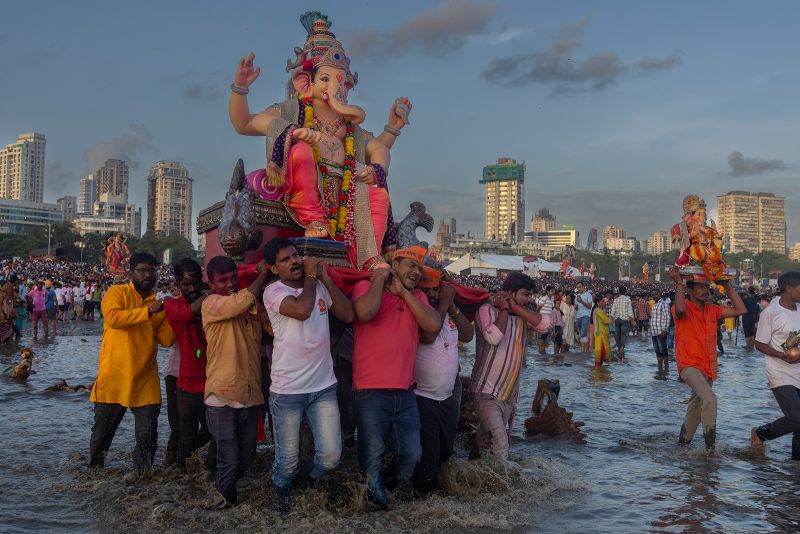Dancing, drums and rituals: with zeal and joy, India celebrates Hindu festival Ganesh Chaturthi
Huge crowds of devotees gathered across India this month to celebrate the Hindu festival Ganesh Chaturthi, marking the birth of the deity Ganesha, the elephant-headed, round-bellied god of prosperity and wisdom.
The 10-day festivities saw worshipers hoist elaborately painted clay idols of Ganesha towards the sky and submerge them in water as part of the traditions associated with one of India’s most vibrant and beloved festivals, celebrated by Hindus worldwide.
In India’s western Maharashtra state, which includes Mumbai, the home of Bollywood, the streets came alive as devotees danced to blaring drums and under clouds of colored powder filling the air.
Ganesha, whose name translates to “Lord of the People,” is known for his ability to remove obstacles and is generally worshipped before new beginnings.
He is typically depicted holding Indian sweets as a sign of the abundance and prosperity that he bestows on devotees. His vehicle, known as a ‘vahana,’ is the large Indian bandicoot rat, another symbol of Ganesha’s ability to overcome anything.
Ganesh Chaturthi falls each year in late summer, during the Bhadra month in the Hindu calendar, and marks a celebratory time of year when families gather. It began this year on September 7 and concluded on Tuesday.
It began with worshippers placing idols of Ganesha, anointed with red sandalwood paste and yellow and red flowers, on raised platforms in their homes and in outdoor public spaces. Devotees then perform special prayers and chant hymns as part of the rituals seeking his blessings.
Ganesha’s favorite foods – coconut, jaggery (a type of sugar), and modak (sweet dumplings) – are offered to him as gifts.
As the festival ends, the Ganesha idols are carried to local bodies of water in a parade where they are then immersed in water. It is believed to allow Ganesha to return to his celestial home after spending time in the earthly realm during Ganesh Chaturthi, a symbol of the impermanence of life.













